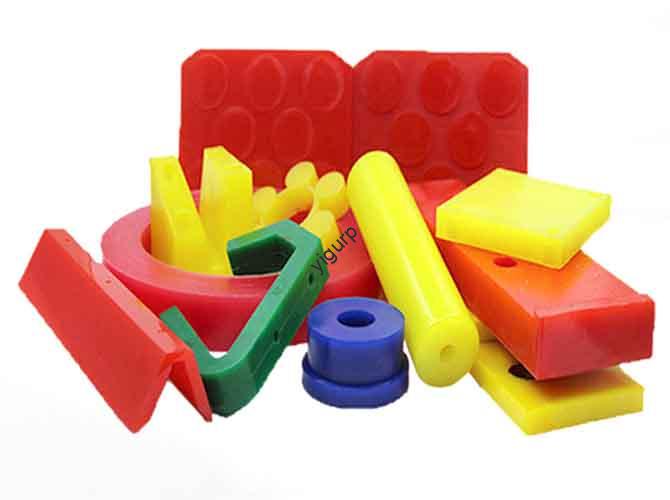Quand 3D printing functional parts—whether for prototypes, composants industriels, or end-use products—plastic strength is the make-or-break factor for performance. A part that lacks sufficient strength may crack under load, fail in high temperatures, or wear out quickly. This article breaks down key high-strength 3D printing plastics, their strength metrics, and how to select the right one for your project.
1. Mesures clés: How to Measure Plastic Strength for 3D Printing?
Avant de comparer les matériaux, it’s critical to understand the core metric used to evaluate strength: résistance à la traction. Measured in megapascals (MPA), it represents the maximum force a material can withstand before breaking when pulled.
| Strength Metric | Définition | Relevance for 3D Printing |
| Résistance à la traction (MPA) | Force required to break a material under tension | Determines if a part can handle pulling or stretching loads (Par exemple, supports, charnières) |
| Résistance à l'impact | Ability to absorb energy without breaking (often tested via Izod/Charpy tests) | Critical for parts that may experience shocks (Par exemple, poignées d'outils, composants automobiles) |
| Résistance à la chaleur (° C) | Temperature at which strength drops by 50% (THAD, Température de déviation de la chaleur) | Essential for parts used in high-heat environments (Par exemple, composants du moteur, 3D buses d'imprimante) |
2. High-Strength Plastics for 3D Printing: Table de comparaison
Below is a detailed breakdown of 5 common high-strength 3D printing plastics, including their tensile strength, caractéristiques clés, et applications idéales. This table helps you quickly match materials to your project’s strength needs.
| Type de plastique | Tensile Strength Range (MPA) | Caractéristiques clés | Applications idéales |
| Acide polylactique (PLA) | 40–60 | Good dimensional stability; faible déformation; facile à imprimer; écologique (biodégradable) | Low-load prototypes (Par exemple, mechanical part models, Shels de dispositif électronique) |
| Acrylonitrile-butadiène-styrène (Abs) | 30–50 | Force équilibrée & dureté; Bonne résistance à la chaleur (~90-110°C); résistant à l'impact | Mid-load parts (Par exemple, composants intérieurs automobiles, poignées d'outils, cadres structurels) |
| Polycarbonate (PC) | 60–70 | Exceptional impact resistance; résistance à la chaleur élevée (~130–140°C); transparent | À haute résistance, high-heat parts (Par exemple, composants aérospatiaux, boîtiers de dispositifs médicaux, safety covers) |
| Nylon (Pennsylvanie) | 50–80 (varie selon le type) | Excellente résistance à l'usure; résistance à la fatigue (Gire les charges répétées); bonne flexibilité | À haute usage, repetitive-load parts (Par exemple, engrenages, roulements, sports equipment components) |
| Carbon Fiber-Reinforced Composites | 100–1,000+ | Extremely high strength & rigidité; léger (50% plus léger que l'acier); résistant à la chaleur | Ultra-élevé, pièces légères (Par exemple, pièces structurelles aérospatiales, composants automobiles hautes performances, racing gear) |
3. How to Choose the Right High-Strength Plastic? (Guide étape par étape)
Choisir le meilleur plastique pour votre impression 3D ne consiste pas seulement à choisir la résistance à la traction la plus élevée.. Suivez ce linéaire, processus axé sur des questions pour aligner le choix des matériaux sur les besoins uniques de votre projet:
Étape 1: Define Your Strength Priority
Demander: À quel type de contrainte la pièce sera-t-elle confrontée?
- Tension (tirant): Privilégier une résistance à la traction plus élevée (Par exemple, Nylon pour les engrenages, composites en fibre de carbone pour pièces structurelles).
- Impact (chocs): Choisissez des matériaux à forte résistance aux chocs (Par exemple, PC pour couvertures de sécurité, ABS pour poignées d'outils).
- Chaleur + force: Optez pour des plastiques résistants à la chaleur (Par exemple, PC pour composants haute température, composites en fibre de carbone pour environnements extrêmes).
Étape 2: Factor in Printing Practicality
Even the strongest plastic won’t work if it’s hard to print. Par exemple:
- Débutants: Commencer par PLA (faible déformation, facile à imprimer) for low-load prototypes.
- Advanced users: Essayer PC ou nylon (require heated enclosures to prevent warping) for high-strength parts.
Étape 3: Coût du solde & Performance
- Budget-limited projects: PLA (faible coût) ou Abs (mid-cost) work for most prototypes.
- High-performance needs: Investir dans composites en fibre de carbone (higher cost but unmatched strength-to-weight ratio) only if critical to the part’s function.
4. Yigu Technology’s Perspective on High-Strength 3D Printing Plastics
À la technologie Yigu, we often advise clients to avoid over-specifying plastic strength for 3D printing. Many projects don’t need the highest-tensile materials—for example, a display prototype can use PLA (40–60 MPa) instead of carbon fiber (100+ MPA), réduire les coûts de 60% without sacrificing performance. Pour les pièces fonctionnelles, we recommend testing with a “baseline material” first: use ABS for mid-load parts, then upgrade to PC or nylon only if real-world testing reveals strength gaps. This approach ensures clients get durable parts without unnecessary expenses, while our in-house printing team optimizes settings (Par exemple, Adhésion de la couche, densité de remplissage) to maximize the chosen plastic’s strength.
FAQ: Common Questions About Plastic Strength for 3D Printing
- Q: If PLA has higher tensile strength than ABS (40–60 MPa vs. 30–50 MPA), why use ABS for functional parts?
UN: While PLA has higher tensile strength, ABS offers better toughness and heat resistance. PLA becomes brittle at <0°C and softens at ~60°C, making it unsuitable for parts exposed to temperature changes or impacts—areas where ABS excels.
- Q: Can I increase the strength of a 3D-printed part without changing the plastic?
UN: Oui. Adjusting printing settings like densité de remplissage (higher = stronger, Par exemple, 80–100% for load-bearing parts) et hauteur de couche (thinner layers = better layer adhesion) can boost strength by 20–40%. Adding reinforcement (Par exemple, inserting metal rods into PLA brackets) also works for high-load needs.
- Q: Is carbon fiber-reinforced plastic always the best choice for high-strength parts?
UN: Non. It’s overkill for low-to-mid load parts (Par exemple, petit engrenage) and has drawbacks: C'est cher, abrasive to 3D printer nozzles (requires hardened steel nozzles), and is less flexible than nylon. Use it only when you need both ultra-high strength and lightweight properties.
